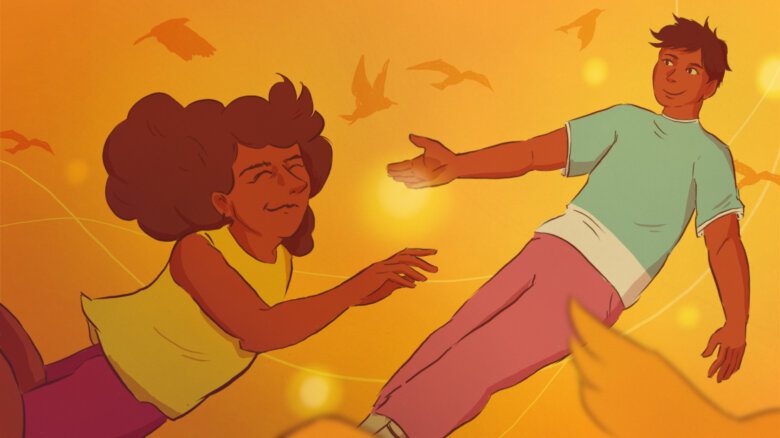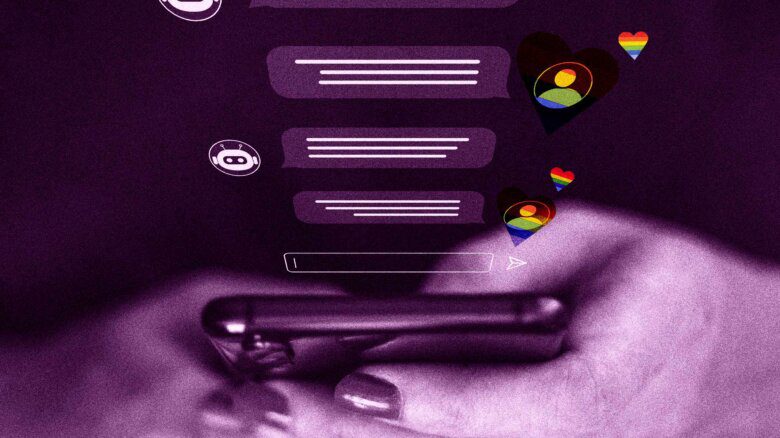Sixteen babies have been born to our friends, neighbours and co-workers since my partner Jill and I decided to have a child in 1996. Not that we’re counting exactly, but having a family clearly comes more easily to some than it has to us.
Our efforts began at a local fertility clinic. After a year of me trying unsuccessfully to conceive, and another year of Jill trying (and miscarrying), we were already a little weary. We had no idea we’d only just begun.
Since then, when I think of our quest to bring children into our home, I’m amazed at the meandering path we’ve followed toward an ever widening concept of family. We’ve learned more about infertility, sperm donors, adoption and fostering than we ever imagined. And we’ve shifted from doubting we would have a family at all, to marveling at the infinite possibilities.
Our efforts at the fertility clinic ended after Jill had diagnostic surgery to see if her parts were in order. They weren’t. We decided it wasn’t worth more surgery to enhance her chances of conceiving, and with that, the dream of either of us birthing a child began slipping away.
A year earlier we’d applied to adopt through Winnipeg Child And Family Services. We wanted a baby, but with a nine year wait to adopt a newborn, we attended an eight-week seminar to learn more about adopting an older child instead. We did the home study and were placed on the adoption registry. From there, it would take two to four years for a suitable match.
At the same time, other parenting options started to emerge. A friend of a friend knew a woman who might be interested in birthing a baby whom we would parent. For six months we talked on the phone with her and eventually met, but in the end we walked away. She and the donor we’d lined up were in different cities, our bank account was exhausted. We were also afraid of these uncharted waters.
Arranging a known donor rekindled our interest in my trying again to conceive, though. By then, the shift from anonymous insemination to a lifelong commitment with a friend had also became an ethical imperative.
The importance of known donors began to evolve after we told a child friend of ours we were planning to have a baby. She wondered who the father would be. We explained that our child wouldn’t have a daddy, but two mommies instead. The daughter of a single mom herself, she replied, “Everyone has a daddy.”
About the same time, an adoption worker and strong proponent of open adoptions (ones that entail some degree of contact between birth and adoptive families) said that using an anonymous donor was tantamount to a closed adoption. She believed people deny their children critical knowledge of their origins when they opt for anonymity. As we learned from adult adoptees about the void of not knowing their birth families, and met adults and children who were making open adoptions work, we came to understand.
Our man drops by a few times each month for a cup of tea and a little “business,” and we have gone from acquaintances talking awkwardly about syringes and menstruation, to intimate friends committed to the success of our “project.”
We’ve even come to reject the term “sperm donor.” We want something more than a little sperm once a month. We want an active player, someone open to a transparent arrangement where Jill and I would be our child’s parents and he would be the “birth father,” the starting point of a familial relationship that would develop mutually between him and the child, with our support and encouragement. The ultimate test of our idea came from my mother.
“What if the child wants to call him daddy?”
That’s okay. After all, everyone has a daddy.
Never satisfied, it would seem, to function on only one front, Jill and I also started discussing fostering a child, sparked by conversations with Jill’s parents who had fostered when Jill was a teenager.
In February 2000 we registered for fostering orientation and liked what we heard. The bad news (for us) is that fostering is a temporary arrangement; children would come into our home and we would fall in love, and they would leave and break our hearts.
The good news is the agency was short of homes for newborns. Newborns? Sign us up!
Children frequently come into care at birth, but are caught up in the social services bureaucracy for awhile before they either return to their birth families or are adopted as older children. In the meantime they are fostered.
And so we embarked upon another homestudy, with many of the same questions we had answered in preparation of adoption. We also did something we had resisted for years. We allowed ourselves to get ready for the baby. We nested. I sewed. We bought a crib. A typical Saturday afternoon was a marathon of trips to Value Village to buy mountains of baby clothes which Jill lovingly laundered and I neatly folded.
Just before our final home visit, we faced a gut-wrenching decision. Our adoption social worker called with a child for us to consider, a little girl who was three years old. As he gave us her information, I imagined undoing the last few weeks of preparation for our foster baby; dismantling the crib, putting away the baby clothes. It was extremely hard, but we said no.
A week later Jill and I became licensed foster parents. The next morning we were asked if we’d like to foster a four-week-old little girl. Within an hour she arrived. We quickly fell in love. Jill and I both work part-time, so one of us was always home with the baby. The neighbours threw us a shower, our families visited, we found joy in the simplest tasks of caring for this beautiful child. And once a week she visited her parents.
Nine weeks later, as quickly as she came, she was gone, back to her parents. And it was exactly as hard as we imagined it would be.
We took three weeks to mourn our first child’s departure. Then we got a call about a newborn baby girl. Were we interested? The baby looked us squarely in the eyes and decided she liked what she saw. She made herself at home and 11 months later she is still here, our daughter; healthy, bright and self-possessed. And we are her parents.
Foster parents, technically, but more and more I find myself dropping the adjective. Jill and I have picked up a lot of lingo in recent years; birth parents, adoptive parents, foster parents; each one seemingly distinct from parents parents, the real ones, the ones who don’t need an adjective.
Our daughter certainly doesn’t make the distinction. Perhaps she has some awareness that the voices she heard in utero are not the ones she came home to, but beyond that we’re her people, her parents, Mommy and Neka (a shortening of the Cree word “nekawiy” which means “my mother”).
From time to time I’m bowled over by the idea of her leaving, but I have come to believe these moments are less about fostering, than a fundamental part of parenting. A while ago, friends of ours gave birth to a premature baby whose first year of life was full of uncertainty; would he live, is he whole, is he developing? They won’t know some of the answers for years. That’s parenting.
As we continue to foster our daughter, a time will come when she’ll need to understand that her future with us is uncertain. To pretend otherwise is a set-up for all of us. And perhaps to state the truth with pride is a reclamation of sorts, a celebration of diversity, an affirmation that families come in all shapes and sizes, and that foster families are as real as any other.
As white parents fostering an aboriginal child, we are also learning how to be a cross-cultural family. A generation ago people like us were told to “take the kids home and love them” and racial, ethnic and cultural identities were swept aside. These days social service agencies try to address the issue of cross-cultural families with more sensitivity. Together we are being introduced to the smells, sights and sounds of our daughter’s culture.
In the middle of our fostering experience, last spring brought another surprise. After a dozen attempts with our man, I conceived.
This was a first and I had to shift my self-perception completely. In my mind I was a woman who would probably never bear a child. Now I was pregnant and had the morning sickness to prove it. We were certainly thrilled, but not the way I’d imagined. We’d changed from those early days when to have a child was to get pregnant, and each unsuccessful attempt brought a very quiet, private sort of despair.
Now that we were foster parents, being pregnant was less about having a child, than an opportunity to experience pregnancy and birth. We were devastated when I miscarried at 11 weeks but, as we mourned yet another loss, our daughter was the best tonic for our grief.
These days we are preparing for the next chapter on our parenting journey. Our daughter’s birth mother is expecting again and we have asked to foster this baby as well, so that these two siblings can be together. It’s our birthday present to our daughter – she turns one in a few weeks.
Noreen Stevens’s comic strip, Chosen Family, appears on page 9 in every issue of Xtra.

 Why you can trust Xtra
Why you can trust Xtra


